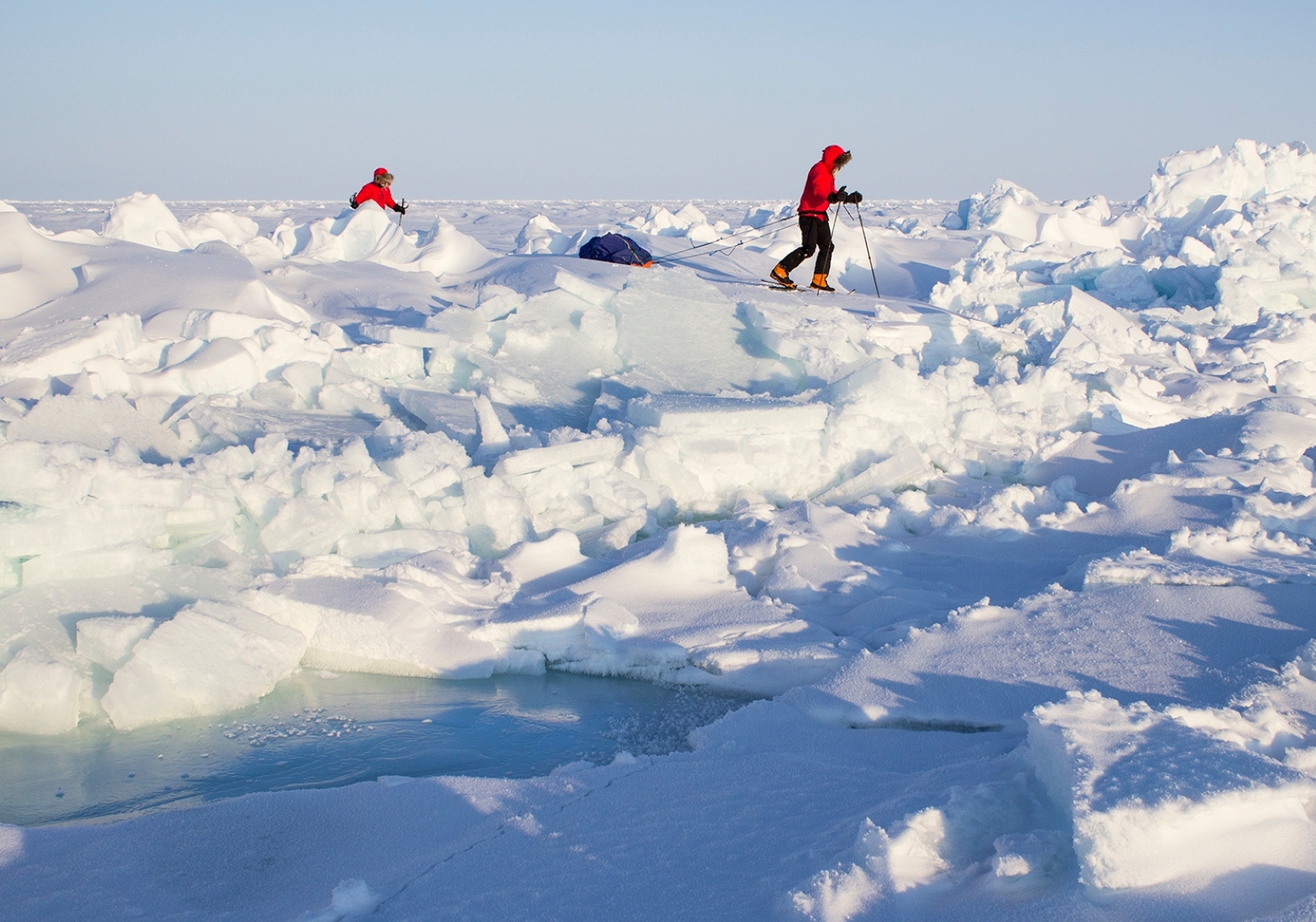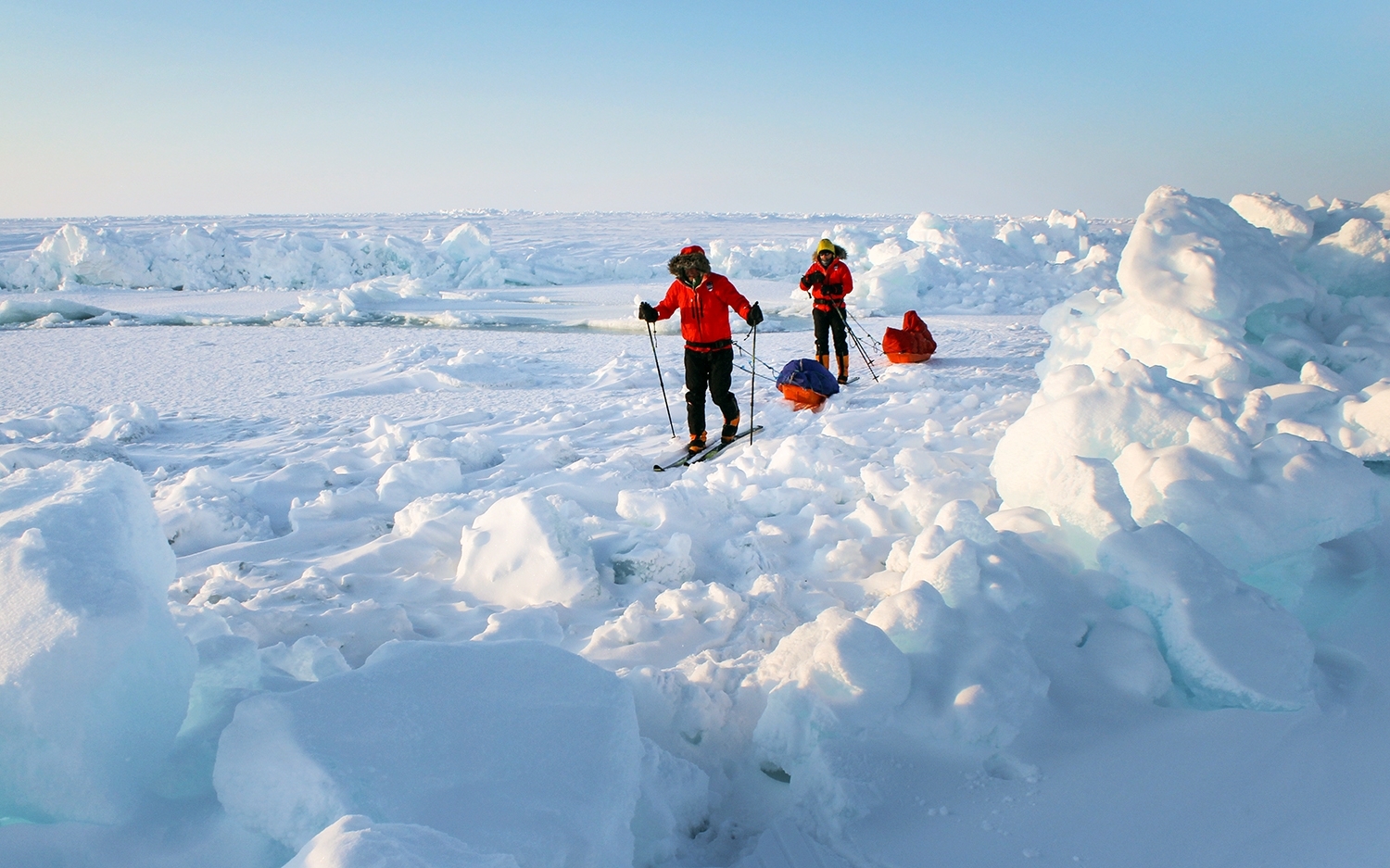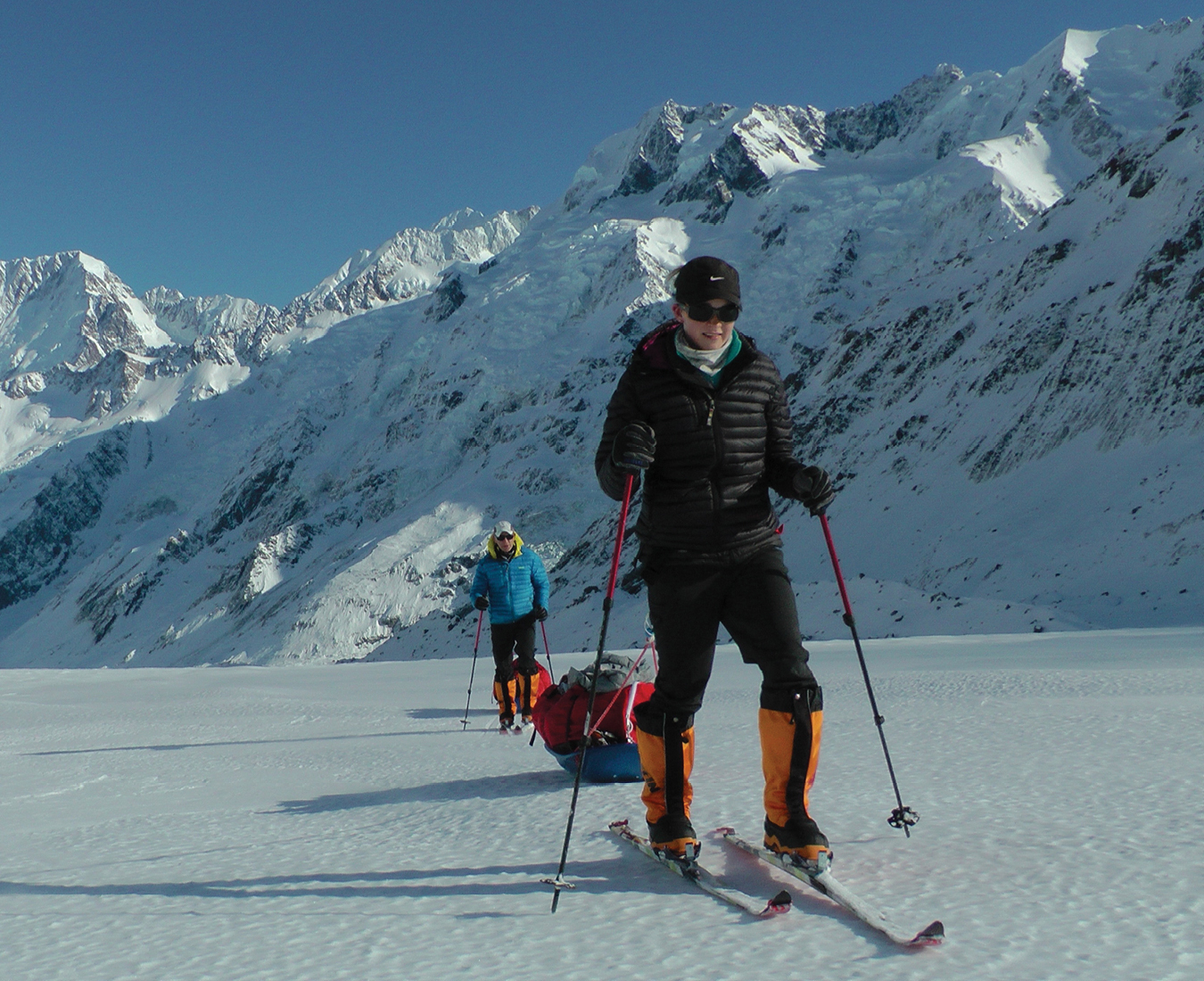Navigate polar pack ice All the Way to the North Pole on this epic frozen journey across the ever changing Arctic Ocean ice. Read More
A high intensity but relatively short duration journey across the frozen Arctic sea ice to ski the last degree to the North Pole. Read More
Traverse the world's largest island on our Greenland Crossing expedition, an expedition in itself or ideal training for longer polar journeys. Read More
Whether you are planning for the Greenland ice cap, or the Poles, these courses will provide the content on which to develop your polar career. Read More


